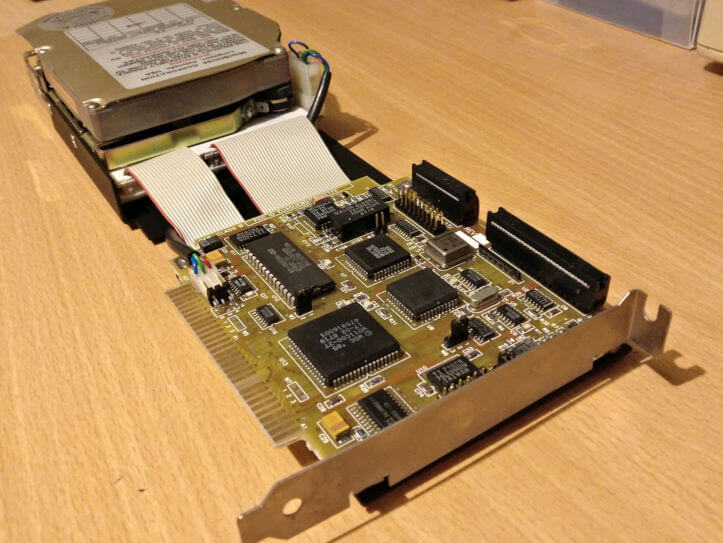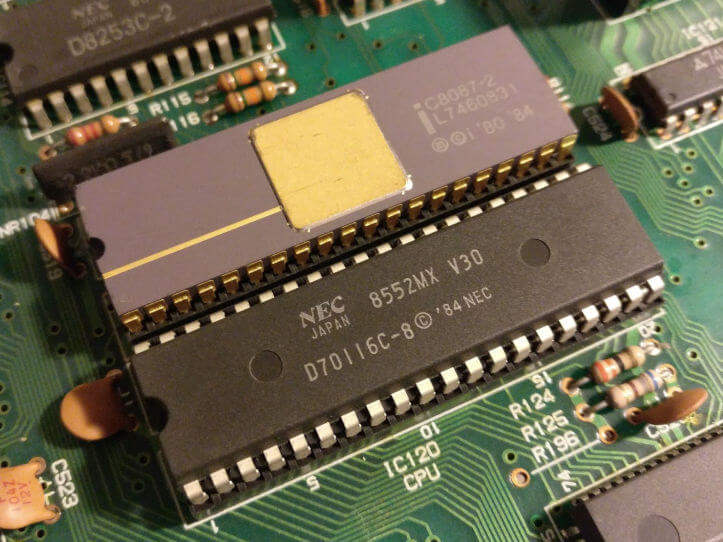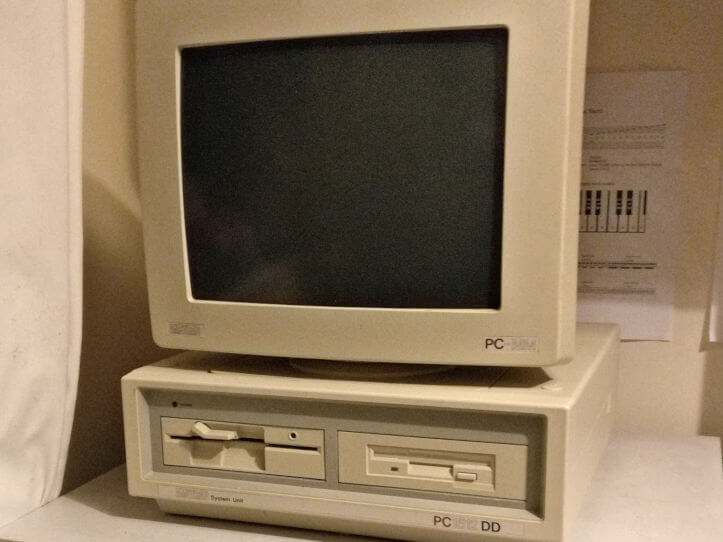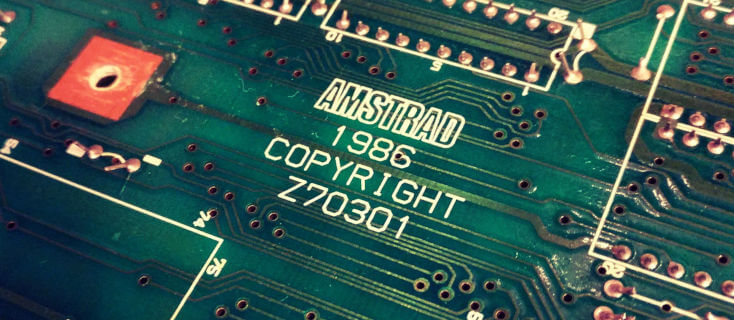The Amstrad PC1512 - IBM Compatible Computing On The Cheap!
As covered in my previous post, the PC1512 was the first foray into the “IBM compatible” PC market for Lord Sugar’s computing and consumer electronics giant, Amstrad. This quirky plastic injection moulded machine sported a Fujitsu MBL8086-2-C CPU, a low cost clone of Intel’s 8086 as used in the first IBM PCs, and was clocked at 8MHz. It also had 512k of RAM (upgradable to 640k), a 5.25” floppy drive, and even came with a monitor - a choice between the cheaper grayscale PC-MM (popular with word processor and spreadsheet users) and the colour CGA-ish PC-CM.
The motherboard was a very compact affair - Amstrad were no strangers to computer design and did a great job of implementing a lot of IBM functionality on their own custom chipset, consolidating multiple chips to reduce costs. On the software side, it included a choice of either the industry standard MS-DOS 3.2, or Digital Research’s DOS Plus, which could run CP/M software.

With 3 ISA slots, a socketed CPU, a slot for an 8087 co-processor and the aforementioned extra RAM sockets, Amstrad’s offering was also true to IBM’s ethos of user-upgradability, especially compared to other home computers of its time.
I recently acquired one of these computers, having played with one as a kid, but as the monitor was faulty it was a while before I even looked at it.
When I opened it up I was in for a very pleasant surprise - in the form of some choice period upgrades!
Upgrade 1: 20MB MiniScribe “Hard Card” 8-Bit ISA HDD

I have to admit that I have no idea what’s on this, as I have no monitor for the PC1512 and couldn’t get my 486 to recognise it. Of course I’ll provide an update once I’ve had a chance to check it out.
These “hard cards” were popular as a drop-in upgrade. The hard drive controller would have occupied an ISA slot anyway, so why not make it a full-length card and slap the HDD itself on there, too? This MiniScribe unit is paired with a Western Digital MFM controller. MFM hard drives were somewhat peculiar in that the drives and controllers weren’t generally interchangeable - certainly not as interoperable as subsequent standards like IDE or SATA.
There’s some more info on the MiniScribe HDD here.
Upgrade 2: 640k RAM Upgrade

The left two banks of RAM in the above picture are the PC1512’s original 512kb, which is soldered to the motherboard. Amstrad used 16x 256K chips for the onboard RAM, this time in the form of NEC D41256C chips. Next to those the previous owner has added an additional 128kb of DRAM in the form of 16x 64K chips. These KM4164B-12 chips were extremely common at the time and can be found in a lot of computers of the era.
Note that the right hand banks of RAM must be fully populated - partial upgrades were not supported. Also jumper LK4 (not pictured) needs to be moved from the left to the right setting for the BIOS to recognise and use the additional memory.
Upgrade 3: NEC V30 CPU and Genuine Intel Ceramic 8087 Co-Processor

The NEC V20 and its 16-bit counterpart V30 were popular drop-in upgrades for Intel’s 8088 and 8086 CPUs respectively. I haven’t had a chance to benchmark it but I’ve read online that it should be up to 30% faster than a standard 8086, depending on application. According to Wikipedia, this performance increase is “primarily due to faster effective address calculation, along with faster loop counters, shift registers and multiplier”. It also adds support for the 80186 instruction set. Sounds good!
But what makes this thing really fly is the 8087 co-processor. This is a genuine Intel ceramic version, in this case the 8MHz 8087-2, of course. A math co-processor improves the speed of various arithmetic operations but particularly floating-point calculations, resulting in a 20% - 500% speed increase - again depending on application. Definitely a worthwhile upgrade.
Brucey Bonus - 3.5” Floppy Drive

As you can see from the original ad that the top of this post, the PC1512 was sold either with a 5.25” floppy drive… Or two 5.25” floppy drives. Some owners also fitted a 5.25” hard drive into the spare slot, too. Of course this computer didn’t have an onboard HDD controller so that would have occupied one of the ISA slots in this case - the alternative being an all-in-one “hard card” solution like the one above.
Someone has obviously swapped one of the 5.25” drives for a 3.5” at some point. I assume it’s only 720k (or maybe even 360k) as it’s using the onboard floppy controller - but that’s something that will require further testing. It seems like it would be easy enough to fit an ISA floppy controller card and 1.44MB drive to make this machine even more useful without changing its outward appearance.
In Conclusion…
This PC must have belonged to someone who used it for some serious work, or perhaps they had more money than sense. It seems odd that it only came with the PC-MM grayscale monitor then, so they can’t have been doing anything too graphics intensive. Perhaps they were a serious spreadsheet junkie. Once I get the Amstrad up and running and into a state where I can check out the contents of the HDD, perhaps I’ll have a better idea!
If you liked this post please consider following me on Instagram or BlueSky!


